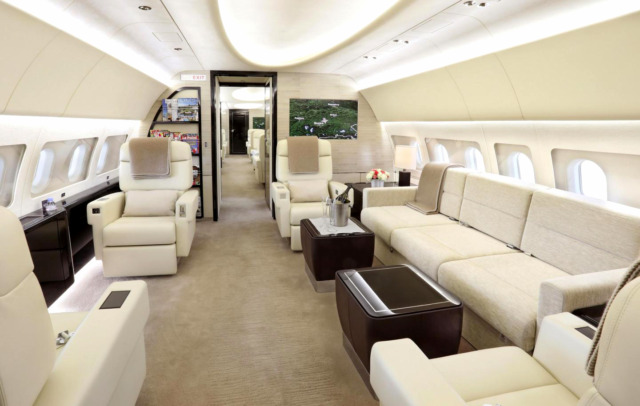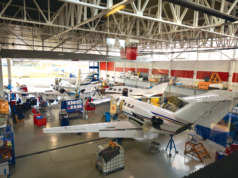
The current unprecedented demand for business aircraft has created an inventory shortage across the entire range, from light turboprops through heavy jets. Coupled with extensive new aircraft production backlogs, the shortage has led to a substantial expansion in the demand for maintenance, repair, and overhaul (MRO) work. Owner/operators are opting to make elective improvements to their current aircraft rather than trying to buy replacements. First-time buyers also are boosting that demand for refurbing and updating preowned aircraft, both for their own use and in charter and fractional programs.
According to JETNET, slightly more than 500 airline-caliber aircraft are owned and/or chartered operated by “VVIPs” (Very Very Important Persons). That limited inventory makes maintaining as well as updating those aircraft critical to VVIP owners and operators. Regular upgrades not only help maintain value, they also add functionality and personalization.
Upgrades and refurbs to the aircraft’s interior must reflect the owner’s work and travel priorities, as well as its utility. A welcoming and warm space invites team collaboration and social interaction; alternatively, a more reserved approach may be better for formal presentations. Either way, the environment should be designed to reduce travel fatigue and increase comfort.
Like most savvy aircraft owners, VVIPs (and the bankers behind them) want high-quality, value-priced solutions to feel they’re getting their money’s worth and more. Financial institutions not only mandate that maintenance be performed as scheduled, but also require improvements to future-proof the value of their investment. Today these improvements include interior retrofits, as well as design customizations, updated inflight entertainment, and the latest in connectivity.
Both owners and bankers also want to install next-generation avionics systems in the cockpit to enhance safety, security, and efficiency, and to maintain market value. In the cabin, the aircraft interior should function as robustly as possible to support collaboration, in-flight meetings, and videoconferencing.
Wi-Fi That Covers Passengers and Crew
Inflight Wi-Fi and connectivity must be on par with what owners and passengers enjoy in their land-based offices and homes. They want the transition from ground to air to be seamless – whether they just drove up in the parking lot or are flying at 30,000 feet. The system needs to accommodate multiple users and devices – videoconferencing on a large cabin monitor, reading breaking news on multiple smartphones throughout the aircraft, or streaming movies and playing games on tablets back in the bedrooms.
Crew Rest Areas Designed for Peak Performance
Long-haul, VVIP aircraft require multiple crews to accommodate safety and regulatory duty time limitations, which differ across time zones, time of day, and governing organizations. These crew rest areas, typically tucked away in the aircraft’s forward section, can be darkened and offer upgrades including comfortable, high-quality foam seats and finishes similar to the passengers’. Many are berthable with a full lay back or generous pitch, or may have divans that convert to bunk beds.
Downtime Minimized To Maximize Fly Time
As business aircraft become increasingly important yet harder to access or obtain, it is even more critical to minimize downtime. The MRO provider should coordinate efforts for interior work, paint, and modifications around heavy maintenance checks so everything can be accomplished in one highly coordinated visit.
The MRO should treat every project with a sense of urgency and be held accountable to perform as promised. Inviting the owner or their designated rep to walk the floor, and talk directly to the people “turning the wrenches” as well as to management, ensures complete transparency. That also will help cut down on in-service time lost to reworking, red tape, and bureaucracy.
This is a unique time for all segments of business aviation. Fortunately, the industry today offers VVIP owners and operators tangible and useful MRO solutions to meet both their investment and business travel requirements. BAA
Jarid King is President of King Aerospace, founded in 1989 by his father, Jerry King. Among the last of U.S. privately-owned VVIP aircraft service providers, they embrace Cornerstone Principles that create a family-like atmosphere and a no-excuses attitude.




